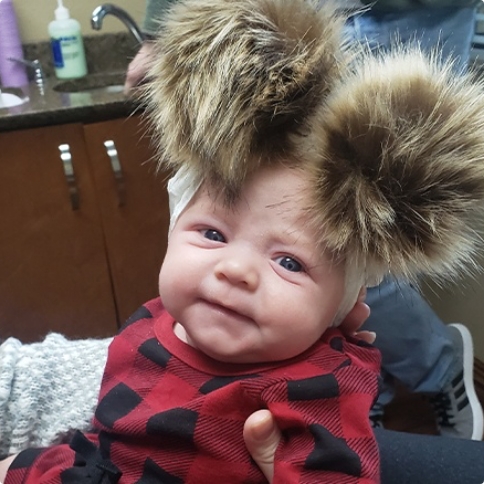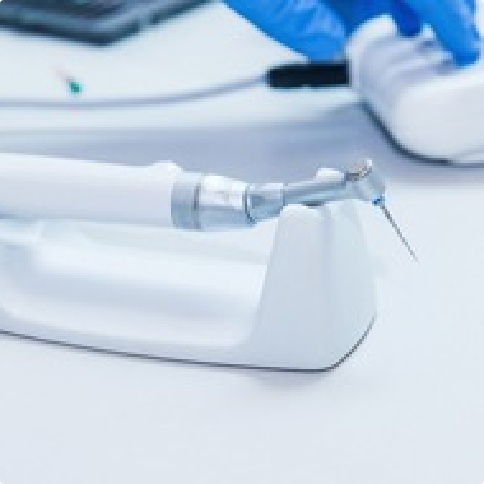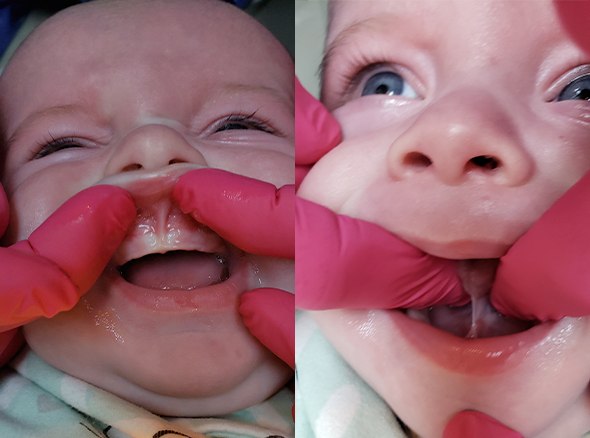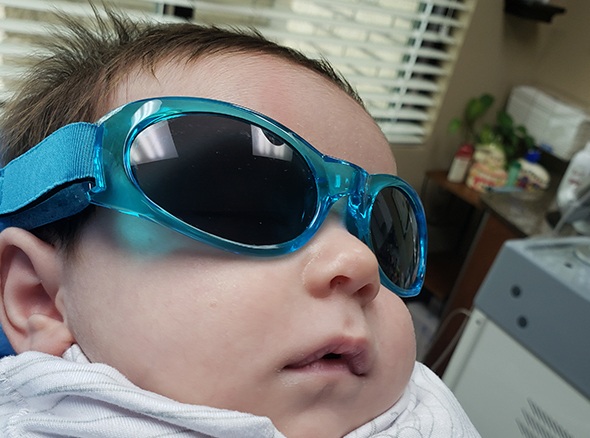Lip & Tongue-Tie Treatment Weatherford
Releasing Restricted Ties for Better Oral Movement
A lip-tie is a condition wherein the piece of tissue that connects the upper lip to the gums is too short or thick. A tongue-tie is similar, but it refers to a condition wherein the tissue that connects the tongue to the floor of the mouth restricts the tongue’s movement. A buccal tie is the condition where the cheek(s) may be attached too tightly to the adjacent gum tissue. Although lip, tongue and buccal ties may seem like minor annoyances, they can lead to devastating consequences if left untreated. On this page, we provide information to help you recognize lip,tongue and buccal-ties so that you can seek needed treatment for you or one of your loved ones. Call us today to learn more about lip and tongue-tie treatment in Weatherford.
Why Choose Cosmetic & Family Dentistry of Weatherford for Lip & Tongue-Tie Treatment?
- Laser Dentistry For a More Comfortable Procedure
- Dentist with Advanced Training & Experience
- Treating Infants, Children, and Adults
Lip & Tongue-Tie Symptoms in Infants/Children

Your baby may be suffering from lip or tongue-tie if:
- They struggle to latch onto a breast
- They have difficulty breathing during feeding
- Nursing makes them fatigued
- They are slow to gain weight
If you are a breastfeeding mother, your infant’s condition may affect you as well. You might experience:
- Pain after or during breastfeeding
- Blocked milk ducts
- Fatigue from constant breastfeeding (because your child never seems to be full)
Lip,tongue and buccal ties will continue to cause issues as your child grows. They may hold their tongue in an incorrect position, which can affect dental development. They can experience difficulty speaking and low self-esteem. Migraines, sleep apnea, and behavioral issues are also common.
Not Sure? Take Our Quiz
Lip, Tongue & Buccal-Tie Symptoms in Adults

If you have a lip-tie, tongue-tie or buccal-tie, you may have learned to adapt to the inconveniences that come with your condition. However, you may still experience several serious issues, including:
- Dental health problems, such as cavities and bad breath
- Aversions to foods of a certain texture
- Neck and back pain
- Digestive problems
- Gum recession
- Orthodontic relapse, leading to the retreat of orthodontics with traditional or clear aligner therapy
- Sleep apnea and/or snoring issues
- TMJ issues and pain
- Speech issues
Lip and Tongue-Tie Treatment for All Ages

Treatment for Infants
If you think your little one has a lip,tongue or buccal-tie, bring them to our office as soon as possible. The treatment Dr. Romack uses to address these conditions is fast and heals quickly — even for babies! The CO2 laser cuts through the restrictive tissue to free the lip,tongue or cheeks to move as it should. Breastfeeding should be possible immediately after the procedure. Chiropractic body movements are usually necessary before the treatment to help loosen facial and oral tissues. We work with several area chiropractors; give our office a call if you need any referrals. Continued body movement may be necessary after treatment as well as myofunctional therapy- it is a case by case determination.
Treatment for Children and Adults
Dr. Romack and Dr. Decker also use the CO2 laser to address lip and tongue-tie in school-age children and adults. However, further treatment might be necessary following the frenectomy. For example, patients may need myofunctional therapy to help them learn how to hold their tongue in its proper resting position. Orthodontics might also be necessary to correct any dental development issues that occurred as a result of tongue-tie. Chiropractic body movements may be necessary before the treatment to help loosen facial and oral tissues. We work with several area chiropractors; give our office a call if you need any referrals. Continued body movement may be necessary after treatment as well as myofunctional therapy- it is a case by case determination.
How Does a CO2 Laser Frenectomy Work?

A CO2 laser is a type of gas laser, which pushes an electric current through a gas (in this case, CO2) to produce a highly concentrated beam of light. This technology can cut into some types of tissue, including the lingual frenulum.
During a laser frenectomy, there is no need for Dr. Romack to numb the baby’s mouth. The doctor simply activates the laser, snips the frenulum to the proper degree, and that’s it! The procedure takes a matter of seconds, and it involves little to no bleeding. Immediately afterward, the infant can nurse or take a bottle. For children and adult frenectomies, Dr. Decker and Dr. Romack will use localized anesthetic during the procedure.
I Need a Checkup & Cleaning I am Worried About Gum Disease I Have a Cavity or Broken Tooth I am Missing One or More Teeth I Want to Enhance My Smile I Want a Straighter Smile I Have Jaw Pain I am Scared of the Dentist I'm Having Trouble Sleeping I Have a Dental Emergency View Our Services
Tongue Tie Transformations




